I was also able to dig out my original file on the instrument and was delighted to discover that I have many of the answers to my questions, as well as a lot more information, from Mike Newton, who corresponded with me in 1990 and 1991. Mike is a fount of information on these instruments, and I felt it might be helpful to share this correspondence with the readers of the forum, in case anybody else is trying to restore one of these instruments. I've lost track of Mike, so I wasn't able to contact him to see if the information has changed or been updated since he wrote to me in the early 1990s. As such, consider the information to be state-of-the-art for about a decade and a half ago. I've enclosed scans of his correspondence to me (done on an old-school IBM typewriter, not a word processor) and the photocopies of period ads that he shared with me. He was really quite generous, and quite ambitious in answering my questions.
Mike and I also had several phone conversations, and I took notes on his answers to my questions. He had suggested that the finish on the instrument was silver lacquer on the sides, gold lacquer brush-painted in the wells, coming about halfway up the sidewalls of the wells. The top surface of the instrument is unpainted, but polished. The instrument was finished with clear lacquer, although buff marks on the aluminum sometimes still showed through. The word National was polished on the raised portions, sometimes not very well. The back was unpainted, although may have had some overspray. It was covered with one piece of gray-brown felt, with no provision for accessing the removable aluminum cover plate. The felt was trimmed the factory using a metal file, held nearly parallel to the back of the instrument, to file off the excess felt at the instrument's edge. This process may have damaged the paint a bit, depending on the operator.
The fretboard was not coated. The fretboard is held to the instrument with screws, located under the pearl markers at the double dot fret intervals. (This may answer Ralph Czitrom’s question from his post on the forum as to why the odd pattern for the fretboard markers. It may have simply been to secure the fingerboard at regular intervals.) Mike suggested that the dots can be broken out with a nail set, and the screws can be loosened with a drop of vinegar. The wooden bridge is maple, dyed black. Tuners and end pin were nickel plated. The tuners were apparently just held on with wood screws, threaded into the aluminum of the peghead. I have a sample of one of these that Mike sent, if anybody is that curious.
Details regarding the pickups are mentioned in Mike's correspondence. The solder connections were apparently free-floating in the body cavity.
I hope this helps. Maybe, with luck, Mike will see this, and he can update the information. If not, it's at least a good start toward the restoration of one of these instruments. I welcome your comments.
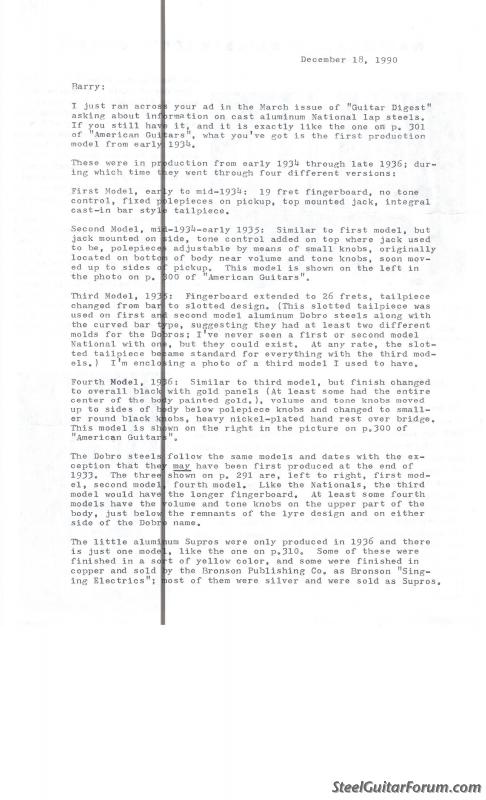
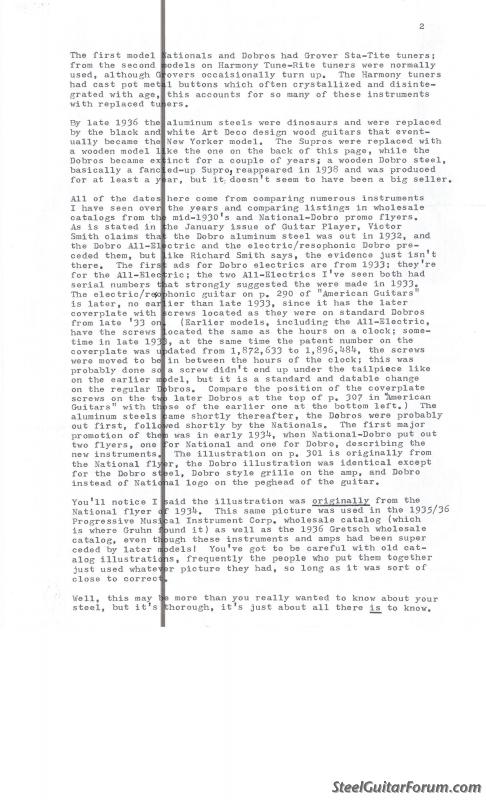

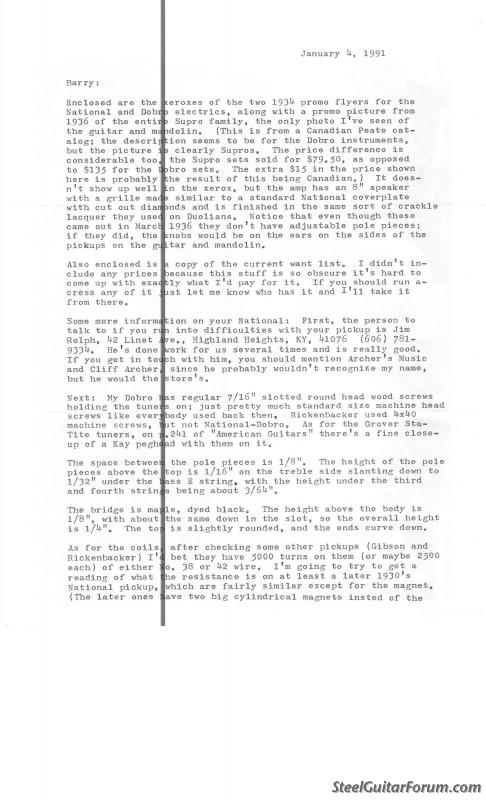
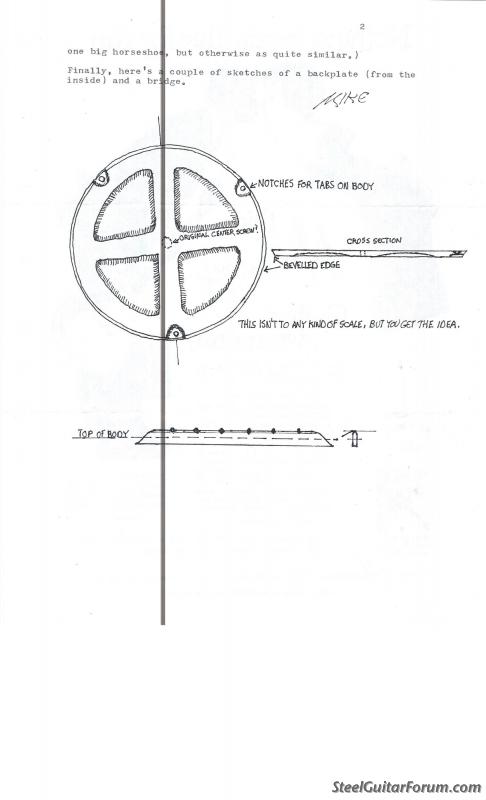
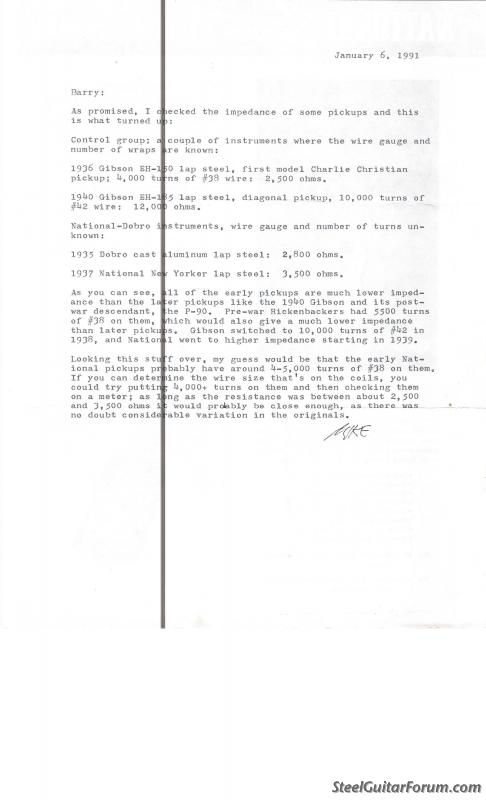
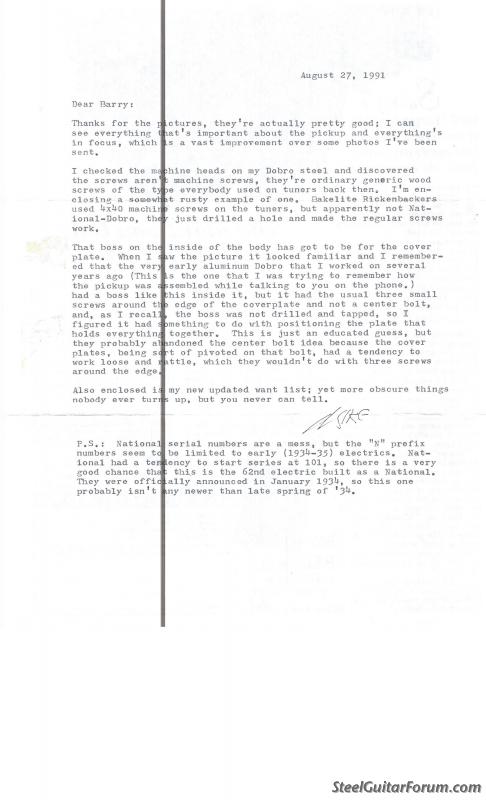
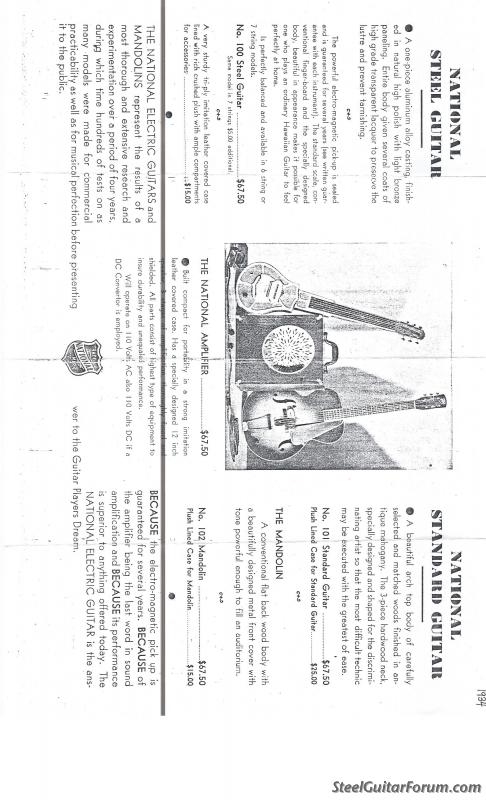
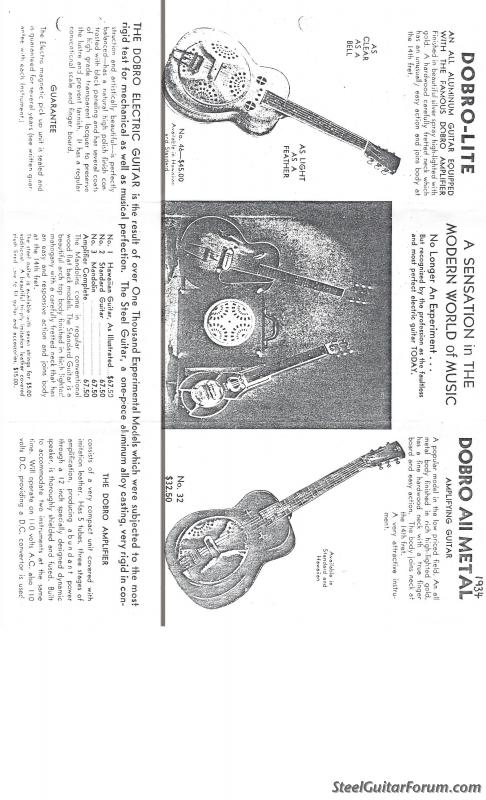
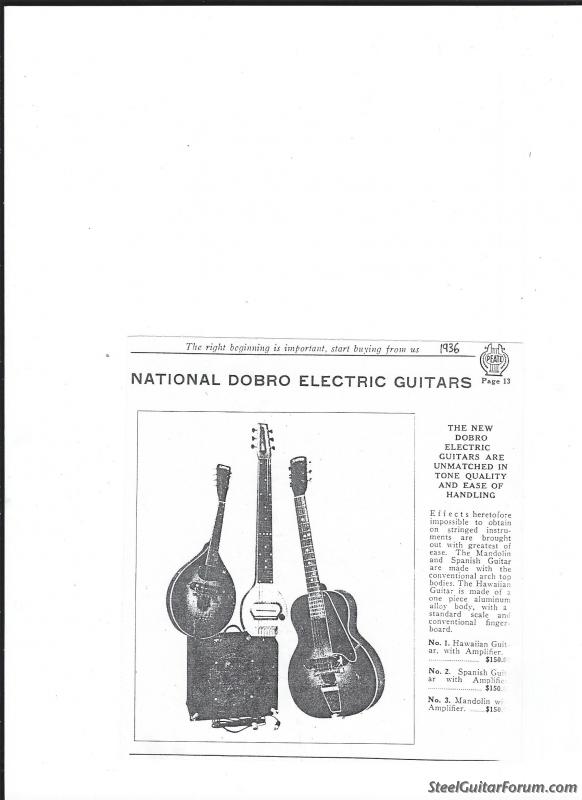
[img]